Travel in Indonesia: Best Ways to Get Around
Since I moved to Indonesia in 2020, I believe I’ve tried nearly every imaginable form of transportation. With over 17,000 islands, Indonesia offers a rich tapestry of cultures, landscapes, and adventures. But traveling in Indonesia, this vast archipelago, can be challenging if you’re unfamiliar with public transport options. Whether you’re planning to explore Bali’s iconic beaches, venture to Java’s cultural heartland, or hop between remote islands like Sumba, Sumbawa or Flores, knowing how to get around is essential. Here’s a guide and some tips to help you find the best ways to travel across Indonesia with ease.
Indonesia’s transportation system is as diverse as its geography. For long-distance travel between islands, domestic flights are the most convenient option. Airlines like Garuda Indonesia, Lion Air, and AirAsia connect major cities and remote regions. Ferries are another popular choice, especially for shorter crossings like Bali to Lombok or Java to Sumatra, offering an affordable way to island hop.

Other tourist transportation options in Indonesia
On land, getting around varies by region. In cities like Jakarta or Surabaya, ride-hailing apps like Grab and Gojek make urban travel simple. ON the other hand local buses and angkot minibusses are budget-friendly, if unpredictable. For a more immersive experience, renting a scooter is common in Bali, Lombok, and other tourist hotspots. But safety should be a top priority.
In more remote areas, private drivers or organized tours are often the best way to explore, ensuring you can access hidden gems without the hassle. With so many options, traveling across Indonesia can be an adventure in itself! In most cases booking your ticket with the 12Go app will be the easiest and cheapest option.

Travel in Indonesia by Plane
Indonesia is vast, and air travel is often the quickest way to move between islands. Major airports like Jakarta’s Soekarno-Hatta International Airport, Bali‘s Ngurah Rai International Airport, and Surabaya’s Juanda International Airport connect the country both nationally and internationally. Regional airports such as Sultan Hasanuddin Airport in Makassar serve as hubs to access more remote locations. Most airports are modern and efficient.
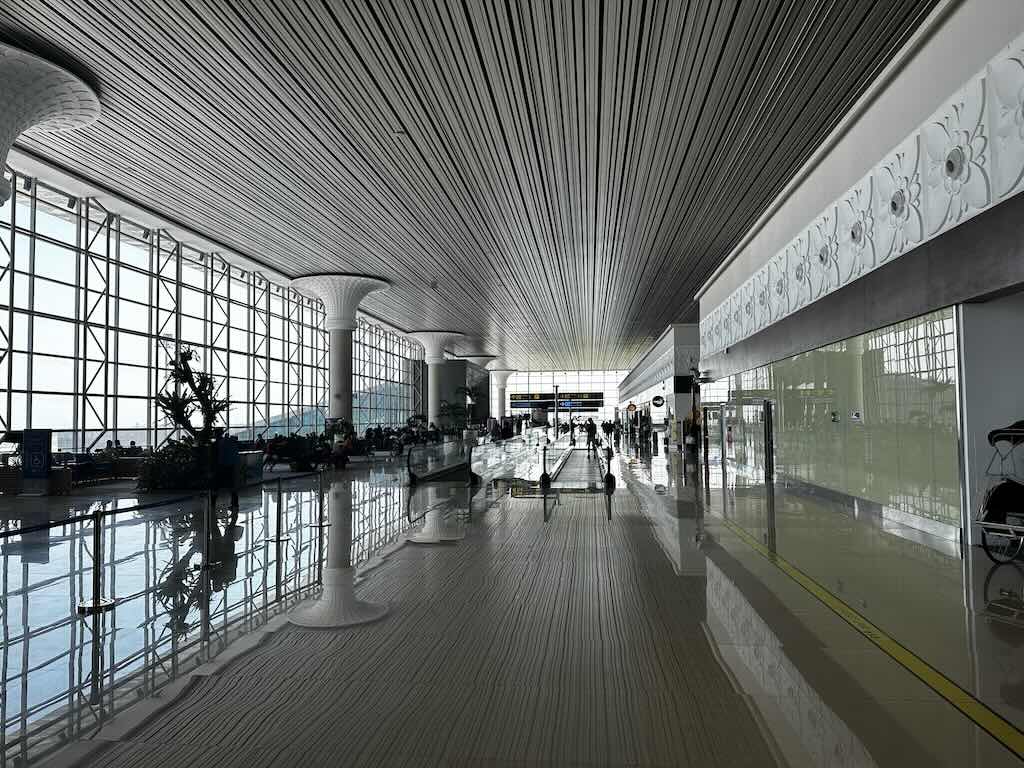
Domestic Airlines in Indonesia
Indonesia’s local airlines play a vital role in connecting the archipelago’s many islands. Garuda Indonesia, the national airline, is known for its high-quality service but tends to be pricey. Citilink, its low-cost subsidiary, is a great alternative. Other budget-friendly options include AirAsia, Lion Air, Batik Air, and Wings Air. These carriers, especially the latter three under the same group, provide access to even the most remote corners, supporting both tourism and local business
Service quality is generally good, though delays are common. However, some incidents can be unnerving, such as when both pilots of a Batik Air flight from Sulawesi to Jakarta fell asleep for 28 minutes mid-flight.
I’ve personally flown with all of these airlines and never encountered any issues.
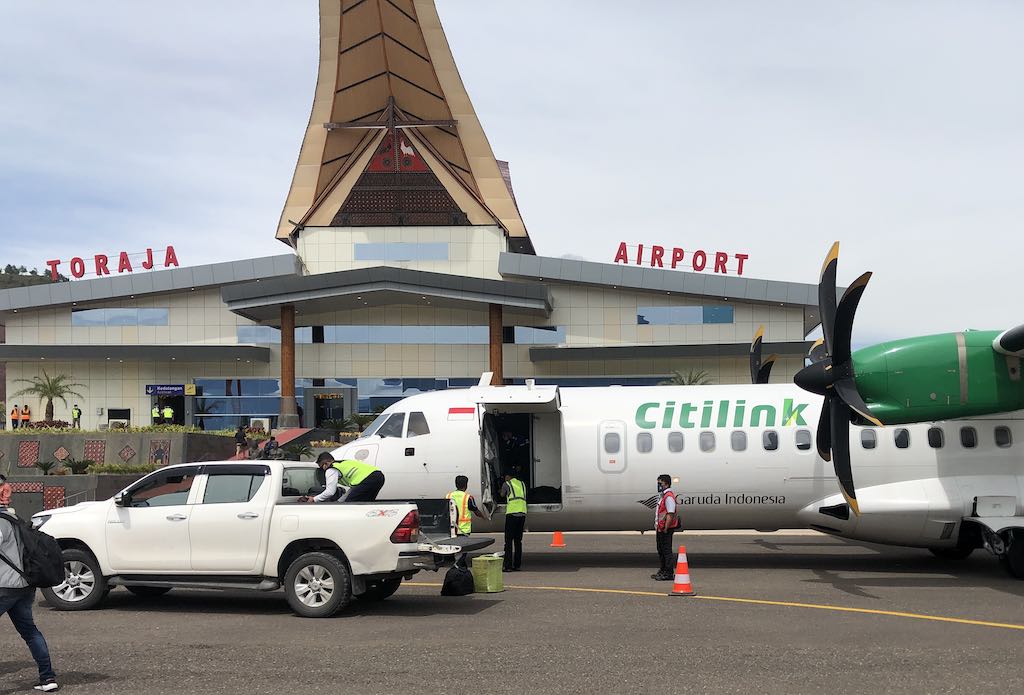
Travel in Indonesia by Train
Trains are a convenient way to explore Java and parts of Sumatra, connecting major cities and tourist destinations. They offer a reliable and economical alternative to cars or planes. I took a train from Yogyakarta to Probolinggo before visiting Mount Bromo and found the journey quite enjoyable.
Major Train Lines
The most frequented train routes are in Java, connecting Jakarta to key cities such as Bandung, Surabaya, Yogyakarta, and Semarang. These trains traverse diverse landscapes, from terraced rice fields to majestic mountains, offering stunning views. In some areas, like in Solo on this photo, the train even runs alongside bus routes within the city on dedicated tracks.
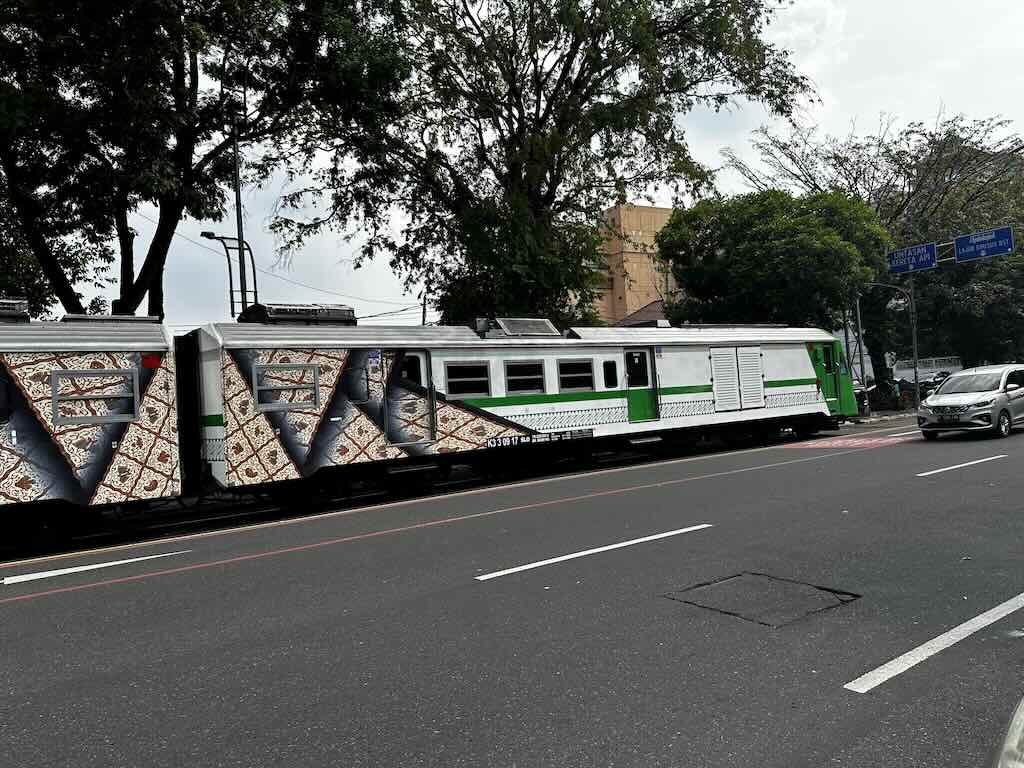
Jakarta-Bandung High-Speed Rail
Indonesia recently launched Southeast Asia’s first high-speed rail service, named “Whoosh” (short for “Waktu Hemat, Operasi Optimal, Sistem Hebat,” meaning “Time Savings, Optimal Operations, Exceptional System”). Covering 143 km at a maximum speed of 350 km/h, it reduces travel time between Jakarta and Bandung from three hours to about 45 minutes. The commercial service began in October 2023 and has already transported over two million passengers in its first four months
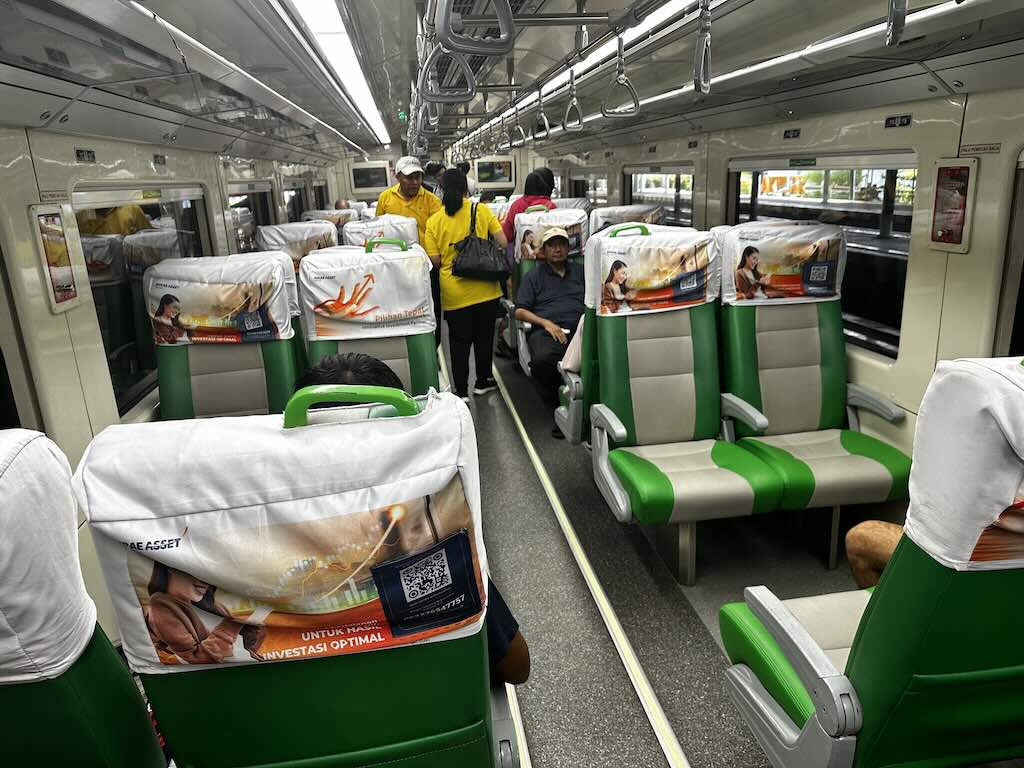
Three Travel Classes
Indonesian trains offer three classes: Economy, Business, and Executive. Economy class provides basic comfort and is ideal for short trips. Business class offers more legroom and comfortable seating. While Executive class provides the highest level of comfort with reclining seats, air conditioning. And even sometimes meal services—perfect for long journeys.
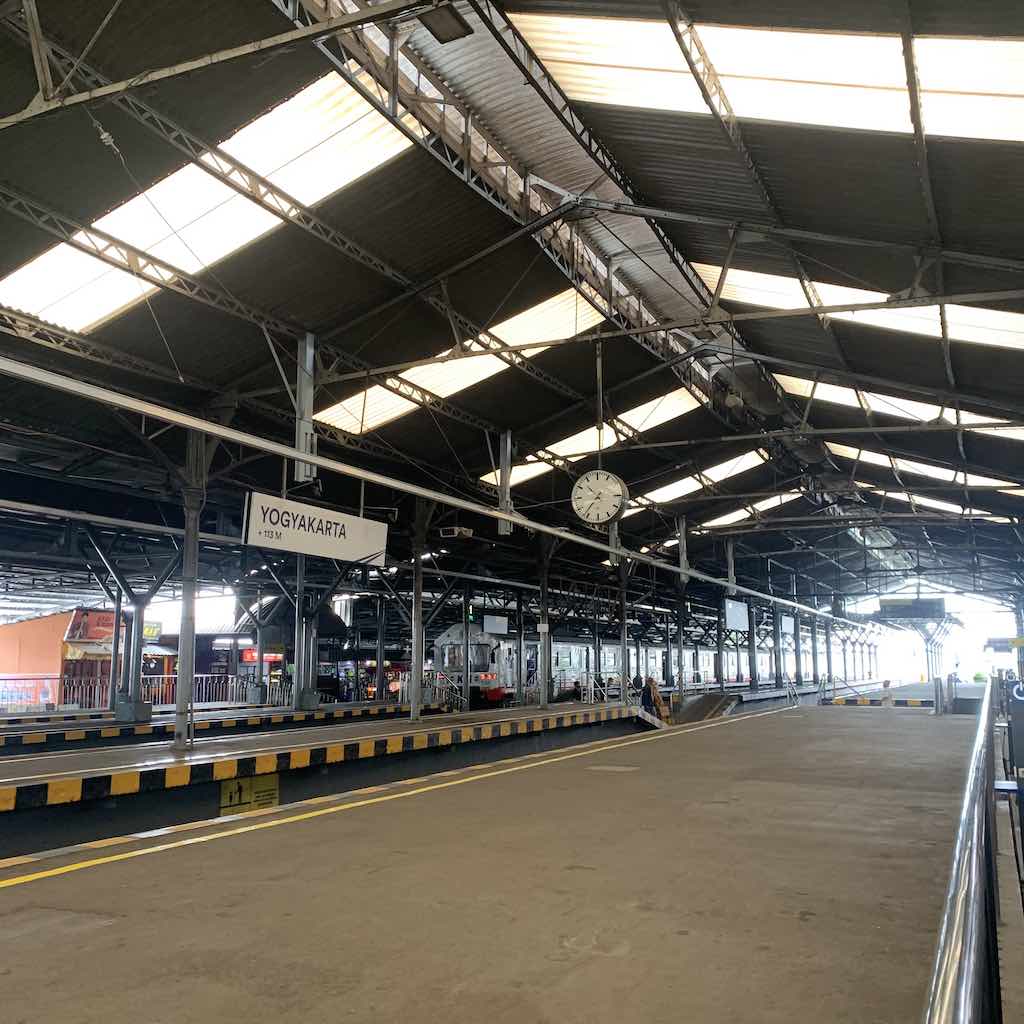
Long-distance buses in Indonesia
Buses are a budget-friendly option for long-distance travel between cities. However, be prepared for crowded conditions and varying levels of comfort. The bus network connects not only major cities but also more remote destinations. Options range from economy buses to air-conditioned VIP services, as well as minibuses seating 6–7 passengers.
I once traveled from Probolinggo to Bali by minivan and wouldn’t recommend it. There’s no formal bus terminal; the minivan picks up passengers from random locations based on their addresses. I waited three hours before the driver picked me up late at night. The driver’s reckless driving, overcrowded vehicle, and long stops for dropping off passengers made the journey unbearable.
In contrast, a friend took the same route on a 40-seat VIP bus, which was slightly faster. It was also far more comfortable, as it wasn’t full, allowing him to stretch out across two seats and sleep. Needless to say, I’ll only travel by minivan or bus in Indonesia again after exhausting all other options!
You can also book your lomg-distance bus in Indonesia with the 12Go app.
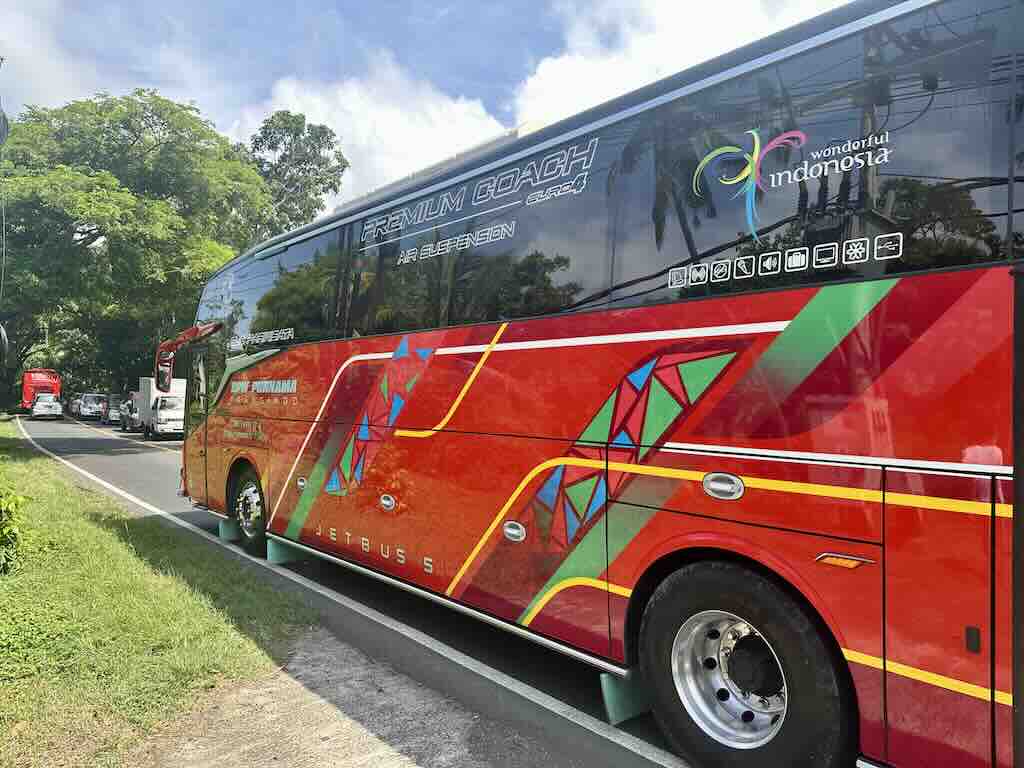
Get Around Indonesia by Car
Renting a car with a driver is by far the best option for exploring a specific island. Especially if covering long distances, such as in Java. Driving yourself can be an option in certain areas, but I don’t recommend it due to Indonesia’s chaotic driving conditions. Encounters with oncoming trucks overtaking in your lane are far too common.
Hiring a car with a driver allows you to relax during the journey. Moreover, you will also benefit from the driver’s local knowledge to avoid traffic jams and road hazards. Drivers also provide valuable tips on must-visit spots.
If you need recommendations for reliable drivers in Indonesia, feel free to message me, and I’ll provide a contact.
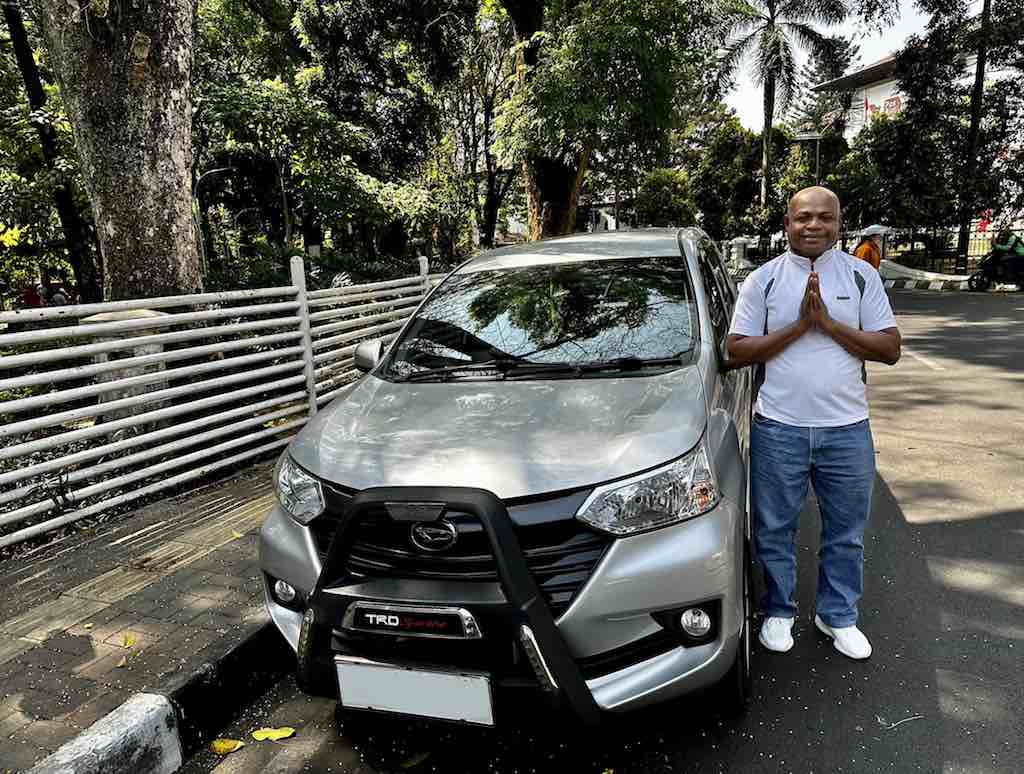
Get Around Indonesia with Motorcycle or Scooter
In regions like Bali, Sumbawa, Sulawesi, and Flores, where roads are generally in good condition, renting a motorcycle or a scooter is a popular way to get around. It offers flexibility and convenience for exploring the area. Ensure you have an international driver’s license and always wear a helmet. Traffic can be chaotic, so caution is essential.
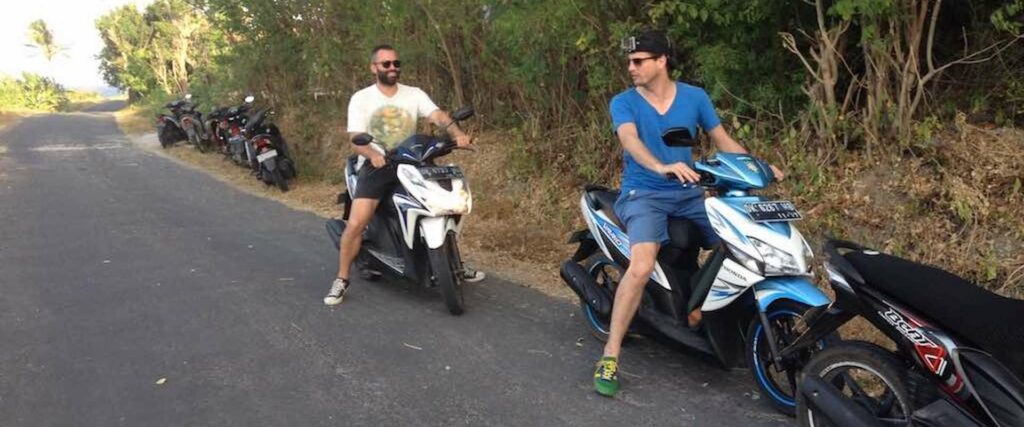
Taxis and Ride-Sharing Apps
Cities like Jakarta, Bali, and Surabaya offer ride-sharing apps such as Grab and Gojek, which are convenient, safe, and often cheaper than traditional taxis. In some areas, metered taxis are available, but always ensure the meter is running to avoid disputes. Personally, I prefer using Blue Bird taxis whenever possible.
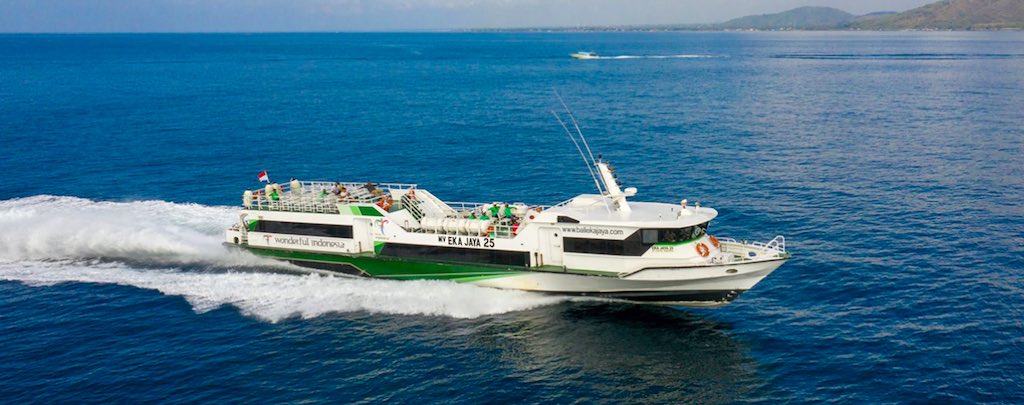
Ferries and Boats in Indonesia
Given Indonesia’s geography, ferries and boats are essential for traveling between islands. Ferries are common in areas like Bali, Java, and Sumatra, while fast boats serve more distant islands or tourist destinations.
Fast boats are generally punctual, especially on routes like Bali-Lombok or Bali-Nusa Penida. Ferry schedules, however, are less predictable and often seem to depart only when full.
I once took a ferry from Lombok to Bali during rough seas after being stranded on Lombok for two days. The eight-hour ferry ride (compared to two hours by fast boat) turned out to be the only way back. While there were some seats available, most passengers found the padded floor mats in the main hall the most comfortable option for the long journey.
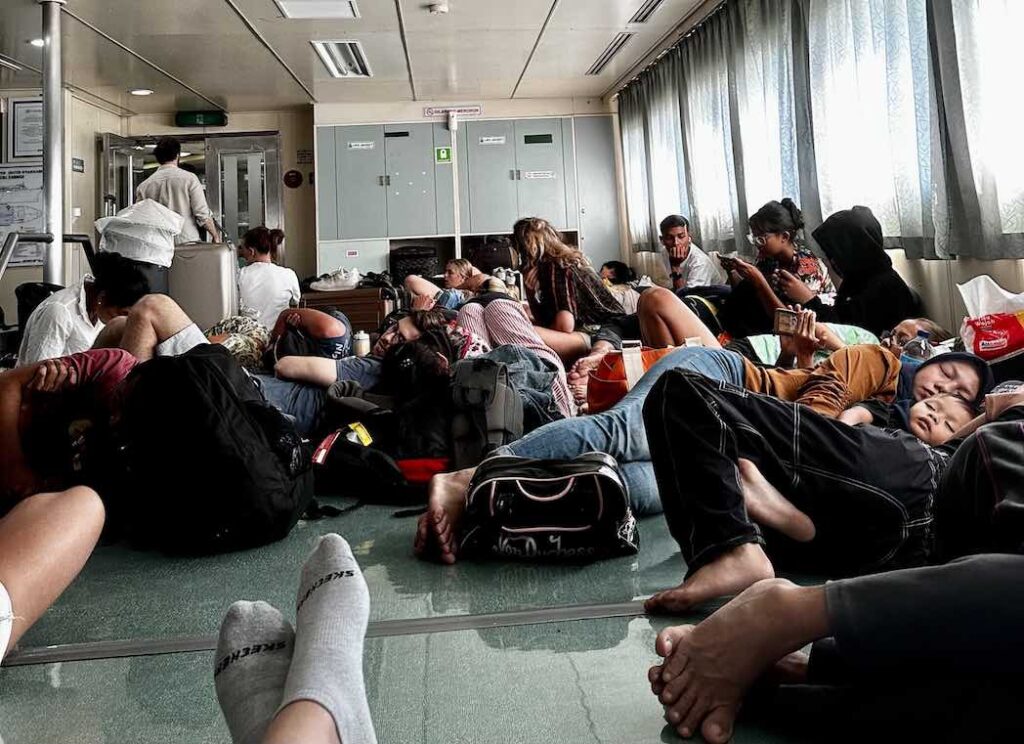
Bicycle rental
In areas like Ubud in Bali or Yogyakarta, renting a bicycle is an eco-friendly and enjoyable way to explore the surroundings at your own pace.
Book your public transport in Indonesia with 12go
Whatever the transport, booking your seat is simple with the 12Go app. It is the most trusted platform for transportation reservations across Southeast Asia. The app allows you to compare prices, schedules, and operators, ensuring you find the best option for your travel in Indonesia. Payment is secure, and you’ll receive a digital ticket, making the process hassle-free. With 12Go, you can plan your journey in advance and enjoy a smooth travel experience.

Hey! I would like to travel from indonesia to malaysia by ferry. I already heats about a ferry from jakarta to singapore and than to malaysia bit couldn‘t find anything in the pelni app, at 12goasia or at easybook. I just found your website and your information sounds like you could help me with my problem. So do you know a way to travel from indonesia to malaysia? It doesn‘t matter from which city to which one in malaysia. I just don‘t want to fly so I‘m looking for another option. Looking forwward to hearing from you! Enjoy your day!
Sonja
Hello Sonja,
There are several options to take a ferry from Indonesia. You can for example take a ferry from Dumai in Sumatra to Malacca (Melaka) with the ferry company indomal fast ferry (https://www.indomalfastferry.com/). There is one ferry every day that takes 3h30 to cross the Malacca straight. There are options from Jakarta (Port of Tanjung Priok) to Singapore through Tanjung Balai Karimun but it will be very long (more than 2 days). Feel free to ask if you have more questions about how to travel in Indonesia.
Blaise